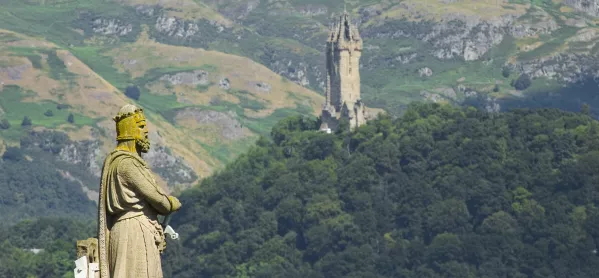I may be biased, but I think it’s vital that young people growing up in Scotland understand their country’s history. It provides them with a link to the past and can help to inform their future.
Moreover, in Scotland, the heritage sector is teeming with employment opportunities, so having a firm grasp on history can help set young people up for future success.
In my job, I make sure that we communicate the story of William Wallace in a way that interests young people. But getting young people interested in history is no mean feat.
William who? Young Scots baffled by country’s key historical events
New ways to teach history: Graphic novel tells the story of the slave trade
Genocide: Where on earth to start when teaching about genocide?
Here are some of the best methods I’ve found to avoid the blank stares and stifled yawns that are all too familiar to history educators:
1. Make it relevant
It’s often challenging for young people to understand the significance of historical events because they can feel so alien. “What’s that got to do with me?” is a common refrain.
Using themes that are relevant to young people’s lives can help them connect with history. In Wallace’s case, ideas of bravery, duty and triumph over adversity resonate with people of almost any age and background. Relating historical events to familiar concepts makes them less abstract and easier to grasp.
2. Make it interactive
Anyone trying to hold young people’s attention today will find themselves competing with an overabundance of devices and online channels, making it harder to generate interest in history through traditional approaches.
Historical attractions are usually equipped with activities designed to pique children’s interest. When we renovated the Wallace Monument this year, we introduced interactive exhibitions, including digital shield design activities and a responsive viewfinder to help young people visualise how different the Stirling landscape was all those centuries ago. Engaging visuals and interactive activities are a fantastic means of capturing the imagination, as they bring an additional dimension to traditional learning.
3. Make it accessible
Unfortunately, we find that visiting historic destinations can be outwith some budgets. Where it’s not possible for young people to visit, I find that bringing the Wallace Monument experience into schools is the next best step. One of the things that impresses young people the most is seeing Wallace’s giant 5’4” sword - but, sadly, it won’t quite fit into my rucksack on school visits. To emphasise the sheer size of the sword, I get the kids to work together to recreate it in paper. Seeing a sword that’s almost twice their size gets great reactions every time.
Catherine Morrison is learning and volunteer co-ordinator at The National Wallace Monument

